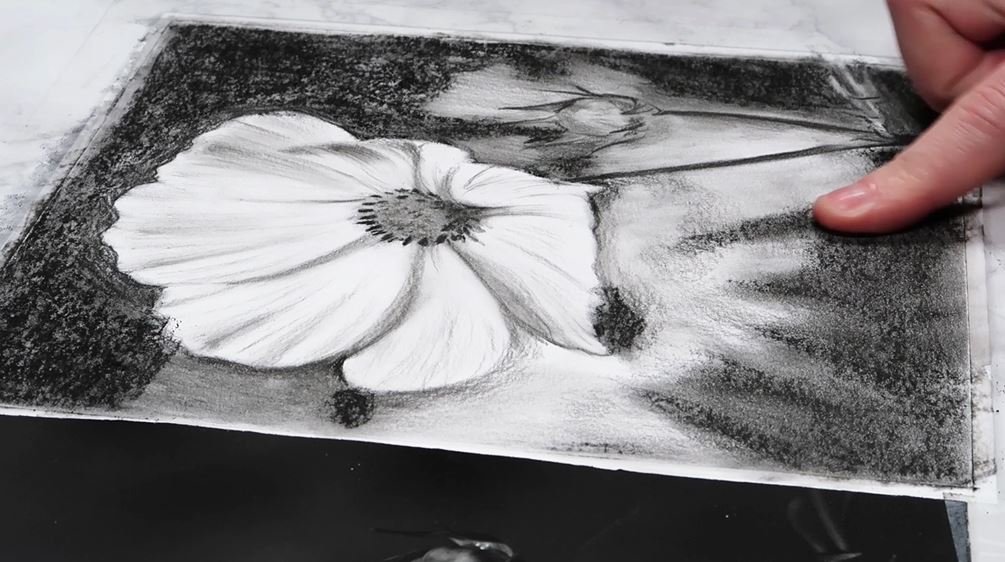Charcoal is one of the most expressive and versatile mediums in the world of drawing. Its rich, velvety texture and deep black tones allow artists to create stunning contrasts, dramatic shadows, and soft gradients with ease. Whether you’re just beginning your journey in sketching or refining your skills, mastering charcoal shading is a vital part of developing your artistic voice.
In this guide, we’ll explore various charcoal shading techniques—ranging from soft blends to bold, dynamic strokes—and how they can be applied to enhance your drawings. Plus, we’ll share how you can take your skills further through a charcoal drawing course in Delhi or an art and craft workshop in Delhi.
Why Use Charcoal for Shading?
Charcoal offers a range of textures and values unmatched by pencils or pens. It’s especially ideal for shading because it can be easily manipulated—lightened with an eraser or smudged for smooth transitions. It allows artists to quickly build up contrast, depth, and form.
There are several forms of charcoal: vine charcoal, compressed charcoal, and charcoal pencils. Each offers a unique feel and is suited to different types of charcoal shading techniques.
1. Soft Blending
Soft blending is perhaps the most popular technique among beginners. It’s used to create smooth transitions between tones and is perfect for drawing skin, skies, or delicate shadows.
How to do it:
- Start by applying a light layer of charcoal.
- Use a blending stump, cotton pad, or your finger to gently blend the area.
- Gradually build up layers to darken the area while keeping the transitions smooth.
This technique is especially useful for portraits, where realistic skin shading is key. It’s commonly taught in beginner-level drawing classes in Delhi, helping new artists build confidence with shading early on.
2. Hatching and Cross-Hatching
These classic techniques involve drawing closely spaced lines to create shading and texture. While often associated with pen work, hatching works beautifully with charcoal.
Hatching consists of parallel lines, while cross-hatching involves overlapping lines at different angles to build darker values.
Tips:
- Keep your lines consistent in spacing and pressure.
- Use a charcoal pencil for better control.
- Vary the direction of your lines to add depth.
This method gives your drawing a more structured, graphic quality. It’s also a great exercise in hand control and tonal awareness.
3. Scumbling
Scumbling involves creating a textured look using circular, scribbled motions. It’s ideal for adding texture to backgrounds, hair, foliage, or rough surfaces.
How to apply it:
- Use vine charcoal or a soft charcoal pencil.
- Lightly move your hand in small circular motions to build a patchy, tonal area.
- Layer over it or blend slightly for more depth.
Scumbling may look loose and casual, but it’s a fantastic way to introduce energy and spontaneity into your charcoal shading.
4. Lifting and Erasing
One of the most powerful aspects of charcoal is how easily it can be erased—allowing you to “draw with light.” This technique is essential for adding highlights, refining shapes, or creating dramatic contrasts.
How to do it:
- Shade the area with charcoal first.
- Use a kneaded eraser or precision eraser to lift off charcoal in specific areas.
- Gently press, dab, or rub to get your desired effect.
This method is often demonstrated in an art and craft workshop in Delhi, where participants can practice highlights on real-life subjects like glass, metal, or facial features.
5. Bold Strokes and Edge Work
For a more expressive, abstract, or dramatic feel, bold strokes are key. Using the side of a charcoal stick or heavy pressure, you can create striking marks and strong contrast.
How to use this technique:
- Hold your charcoal sideways for broader marks.
- Apply quick, intentional strokes to build movement and rhythm.
- Combine with softer shading for dynamic composition.
Bold strokes are great for gesture drawings, landscapes, and conveying movement. They’re also commonly explored in more advanced sessions of a charcoal drawing course in Delhi, helping artists break free from perfectionism.
Combining Techniques for Depth
The magic of charcoal shading lies in combining multiple techniques to bring a drawing to life. For example, you might use soft blending on a face, hatching for clothing texture, and lifting for highlights in the eyes. Mastery comes from understanding how each technique interacts with light and form.
Practice is key. Start with still-life objects, self-portraits, or nature studies. As your eye for value and shape develops, so will your ability to mix and match techniques naturally.
Tools You’ll Need
To get started with charcoal shading, here’s a basic toolkit:
- Vine and compressed charcoal sticks
- Charcoal pencils (soft, medium, hard)
- Kneaded eraser
- Blending stump or tortillon
- Fixative spray (to prevent smudging)
- Textured paper (preferably medium to heavy weight)
Having the right tools can make a world of difference, especially as you experiment with different textures and techniques.
Take Your Skills Further
While online tutorials and practice at home are helpful, joining a structured program can accelerate your growth. A professional charcoal drawing course in Delhi can help you get expert feedback, understand form and light more deeply, and learn from peers.
At Arts Shala, we offer hands-on drawing classes in Delhi that focus on both foundational and advanced techniques, including charcoal shading. Our workshops are designed to help artists of all levels explore their creativity in a supportive, inspiring environment. Whether you’re interested in a weekend art and craft workshop in Delhi or a longer-term course, our expert instructors are here to guide you every step of the way.
Final Thoughts
Charcoal shading is an essential skill for any aspiring artist. From subtle gradients to striking contrasts, this medium offers endless creative possibilities. By experimenting with techniques like blending, hatching, and lifting, you can elevate your drawings and express your vision with depth and emotion.
So pick up that stick of charcoal, get your hands a little dusty, and let the art flow.
Read More: https://guest-post.org/













































